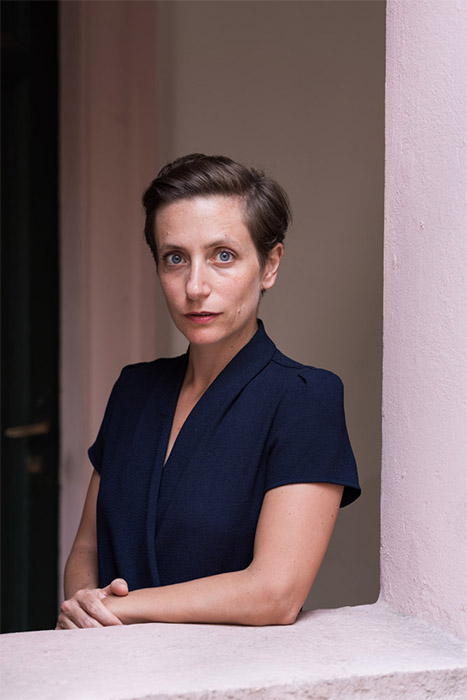Ido Garini believes in experiences rather than products, as he finds that we live in a world saturated with design. Food has therefore become Studio Appétit’s primary focus. Included in its working repertoire are large conceptual food installations, product designs for food, dining concepts, food products, restaurant art direction, menu graphics, recipes, and serving concepts. The studio’s self-initiated research project called Things of Edible Beauty is a new platform that looks at food in an aesthetic and ornamental sense; for example, by creating a new flavour each season that is then transformed into a fragrance.
Ido Garini’s core goal is to create experiences. “With this aim, I use design and food”, he explains, “because eating is – together with having sex – the only human activity that involves all the senses and creates really captivating experiences.”
Born in Israel, Garini studied product design in Israel and Madrid, but has collected experience in restaurants around the world since he was 16, working as a bartender, a restaurant manager, and a chef. In New York, Garini took courses in food studies, learn-ing the biology and history of food. There, in 2011, he also founded his multidisciplinary experience design studio, Studio Appétit, specialised in eating design and culinary oriented projects. Since then, Garini has relocated to the Netherlands. “When I founded Studio Appétit, food design was already happening, thanks to the great work of pioneers like Martí Guixé, Marije Vogelzang, and Marc Bretillot.
 This article appeared in DAMN°52. Order your personal copy.
This article appeared in DAMN°52. Order your personal copy.
But what I did was to provide an evolution of their work, rather than a continuation. I started wondering about the future of food design and how to incorporate it into product design, branding, graphic design, restaurant design, and so on. I utilise food design as part of a larger multidisciplinary design approach for the creation of new experiences.”
Garini’s belief in ‘experiences’ rather than ‘products’ derives from the fact that we live in a world that is saturated with design, and in which design moves far too quickly. He noticed that the design world is moving more and more towards experiences: in-stead of designing yet another chair, we design the experience of seating. “Studio Appétit designs products, too,” Garini informs, “but at the end of a re-search process that focuses on the experience, and our way to enhance the experience is through food.” To describe this process, he invented a word: appetiting, a verb meaning ‘to create something appetising’. Garini’s focus on food also springs from the fact that food has become so important in today’s society. “Food is the most popular way of self expression to-day”, he claims. “As The New York Times put it, ‘the Sunday painter became the weekend chef’. It is really something that touches our daily lives.”
Studio Appétit’s projects include a great variety of activities: from large conceptual food installations to product design for food to dining concepts to food products to restaurant art direction to menu graph-ics to recipes and serving concepts. In Tel Aviv, for example, Studio Appétit designed the Bellboy cock-tail bar, defining all its components, from the wall-paper to the recipes, and creating a dialogue among the various elements. For fashion companies, Garini has translated the topic of fashion shows into food, while for Software Technology company Check Point he created a complex food installation on the occasion of their 20th anniversary, which included computerised recipes, food served ‘in the cloud’, and computer servers with shelves full of macaroons disguised as data. “We give companies new ways of manifesting their concepts”, Garini explains. “The thrill threshold of customers is so high today – as we have so much – that companies look for ways to become more impressive. We help push forward the experience.”
However, the studio’s core works are self-initiated research projects like the one launched last year at the Victoria & Albert Museum during the London Design Festival and then presented in Milan during the Salone del Mobile. Entitled Things of Edible Beauty, it is a new platform that looks at food in an aesthetic and ornamental sense. “In the same way that fashion is based on seasons, we create a new flavour each season that we then transform into a fragrance”, says Garini. “We use the flavour of the season for our food installations, but one can also use it on the body, lick it, let it be licked by some-one else, or put it on their food.” Another product in this series is a sticky lip-gloss onto which one can apply flowers and then eat them or share them. Part of the project includes a series of four different sets of jewellery that incorporate food instead of diamonds and precious stones. “They are made of gold-covered brass and look like crowns; in them you can put food or edible flowers, but they also look beautiful without anything in them.” One element connects all of Garini’s projects: his attention to detail and quality, because that is what makes the experience believable and full.
Studio Appétit is presenting an installation during the London Design Festival in September. It occupies the old jewellery workshop at Central Saint Martins College of Art and Design: during the day, 16 workstations each display the working process of jewellery making, while in the afternoon, each workstation is transformed into a place for eating experiences, whereby 16 people discover not only the taste, but also the refinement and beauty of food.





